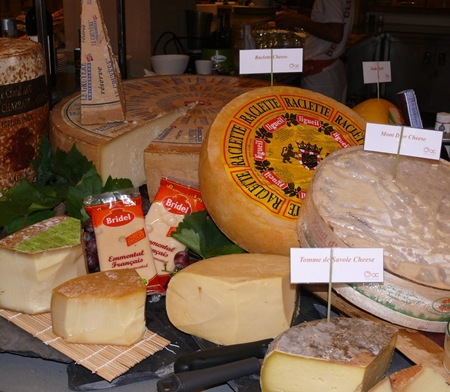While the majority of photographs taken in the world are of people and places, there is another branch of photography that you should try, and that is Still Life photography.
This is one type of photography where the result is totally under your control. You don’t have to wait until the sun comes out again, you don’t have to wait until the model fixes her lipstick (again), and you don’t have to ask someone’s permission to take the shot. This is Still Life photography.
 Cheeses!
Cheeses!
There are those who think Still Life work is simple. Unfortunately, no! However, it can be one of the most amazingly creative and satisfying aspects of photography. The ability to position and light a subject to produce a pleasing result can fill up an entire day. In fact, the pros can take a couple of days to get a still life shot just right. That’s right. A couple of days!
You see, there are so many aspects to be covered in still life photography. It is not just a case of placing the subject on a sheet of paper and pushing the button. Still life photography teaches you every important aspect of the artistic side of photography, as well as honing up your basic photographic skills.
The first good thing about still life shots is the subject doesn’t complain and tell you to hurry up and “Is my mascara smudged?” You can also just pick up the subject and move it in any direction to suit the shot. You don’t have to ask for permission. Oh yes, there are many advantages in having a silent subject!
Let us begin with lighting. The secret to many still life shots is to have two light sources. This can be daylight plus flash, two flashes, electric lights, daylight and a mirror – but you might need two. One to basically light the subject and the other to light the background. However, many shots work merging into a dark background.
The next important item in still life photography is your own eye. You will find there are even books on the subject, but what you have to do is to look at your table-top and arrange the items in a manner that is pleasing to your eye. Do you want them overlapping, or at some distance from each other? Generally there is one dominant item – bring it to the foreground and then arrange the supporting items after that. Some overlap generally works well such as this cheese shot.
Having got that far and you are now pleased with the composition, you then have to look through your camera. Help! It doesn’t look the same as it did with the naked eye! What’s gone wrong? It is because of the differences between the camera lens and your eye’s focal length. You now have to look through the camera and adjust the table-top items to produce the pleasing composition you saw with your own eye. Yes, this takes time, and now you can begin to see why the pros take so long!
After you have the composition to your satisfaction – you have to light it. This is where daylight or tungsten light becomes easier than flash – at least with the sun’s (filtered) rays or diffused tungsten you can see what you are going to get. (In the pro studio, the flash units have tungsten “modeling” lights so that you can get the idea of how the flash will illuminate the subject, before popping the shutter.)
Generally, I light the background first, then bring in the foreground (subject) lighting, carefully noting “spill” of one light source into the area of the other. Again, this can take hours! In fact, you can change the whole look of a table-top scene just with the balance of lighting used.
Remember too, that the exposure settings used in the camera depend upon the foreground lighting (not the background), and for most situations (but not all) the background can be brighter than the foreground, to “wash” it out a little. But again this is experimentation.
No, Still Life photography is not easy, even though it sounds straightforward. Perhaps it is easier to help the model fix her mascara!




